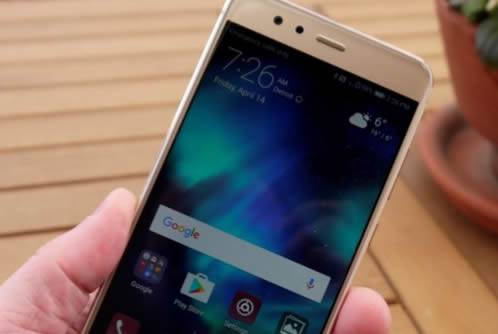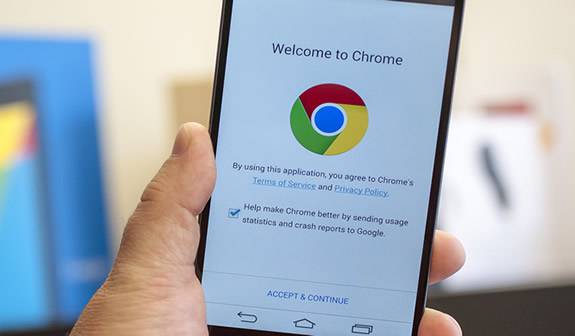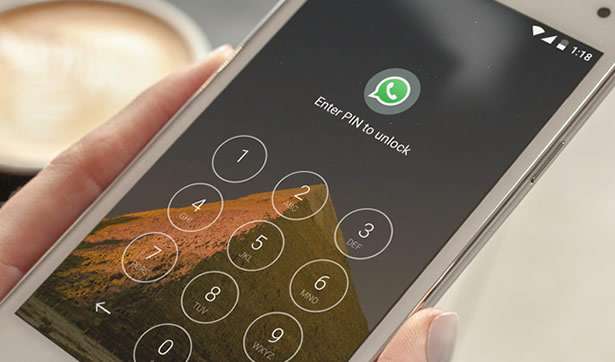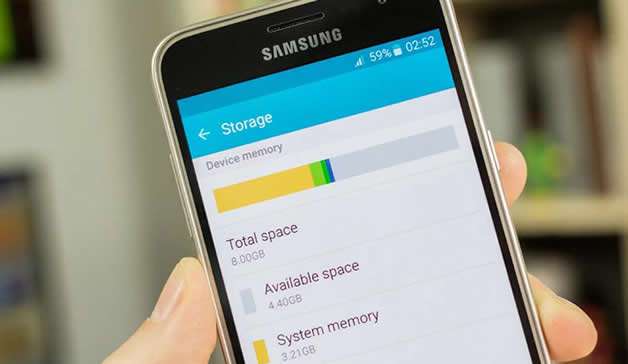Installing Windows 7 on an Android phone may seem like an unusual idea at first, but it can offer some unique benefits. Whether you’re looking to experiment with different operating systems or want to have a portable Windows device, this guide will walk you through the process of installing Windows 7 on your Android phone.
Why You Need to Install Windows 7 on Your Android Phone
1. Familiarity: Windows 7 is a popular and widely-used operating system, so if you’re already familiar with its interface and functionalities, having it on your Android phone can provide a seamless transition.
2. Productivity: Windows 7 offers a wide range of productivity tools and software that may not be available on Android. By installing it on your phone, you can have access to these tools on the go, allowing you to be more productive and efficient.
3. Compatibility: Some applications and software are designed specifically for Windows, and by installing Windows 7 on your Android phone, you can run these applications without any compatibility issues.
4. Experimentation: If you’re a tech enthusiast or someone who likes to tinker with different operating systems, installing Windows 7 on your Android phone can be a fun and educational experience.
Video Tutorial:
Part 1. Using Virtualization Software
Using virtualization software is a common method to install Windows 7 on an Android phone. Here are the steps to do it:
1. Install a virtualization app: Download and install a virtualization app from the Google Play Store, such as “Limbo PC Emulator” or “Bochs.” These apps allow you to run an operating system within your Android environment.
2. Download a Windows 7 ISO: Find a legitimate copy of the Windows 7 ISO file and download it to your Android phone. You can typically find these files on official Microsoft websites or trusted software repositories.
3. Configure virtualization settings: Open the virtualization app and configure the necessary settings. This includes selecting the type of virtual machine you want to create, allocating system resources, and specifying the location of the Windows 7 ISO file.
4. Install Windows 7: Once the settings are configured, start the virtual machine within the app. The installation process will be similar to installing Windows 7 on a regular computer. Follow the on-screen prompts to complete the installation.
5. Use Windows 7 on your Android phone: After the installation is complete, you can now access and use Windows 7 on your Android phone. The virtualization app acts as a container for the operating system, allowing you to switch between Android and Windows 7 as needed.
Pros:
1. Allows you to have Windows 7 on your Android phone without modifying the device’s firmware.
2. Provides a familiar Windows interface and access to Windows-specific applications.
3. Can be a great solution for testing and experimenting with Windows 7 on a different platform.
Cons:
1. Performance may be slower compared to running Windows 7 on a dedicated computer.
2. Requires significant system resources, including CPU, RAM, and storage.
3. Limited compatibility with certain hardware features and drivers.
Part 2. Dual Booting with Android and Windows 7
Another method to install Windows 7 on an Android phone is through dual booting. This allows you to choose between Android and Windows 7 when booting up your device. Here’s how to do it:
1. Check device compatibility: Not all Android phones support dual booting, so it’s essential to check if your phone is compatible. Look for custom ROMs or firmware that offer dual boot functionality specifically for your device model.
2. Backup your data: Before proceeding with dual booting, make sure to back up all your data. Dual booting can potentially erase or modify existing data on your phone, so it’s crucial to have a backup in case anything goes wrong.
3. Unlock bootloader and install custom recovery: Most dual boot solutions require unlocking your phone’s bootloader and installing a custom recovery. This process can vary depending on your phone model and manufacturer, so it’s important to follow specific instructions provided by the custom ROM developers.
4. Download and install dual boot ROM: Find a reputable source for dual boot ROMs compatible with your phone. These ROMs typically come as zip files that you need to flash through the custom recovery. Follow the installation instructions provided by the ROM developers.
5. Select and install Windows 7: Once the dual boot ROM is installed, reboot your phone into the custom recovery mode. From there, navigate to the option to install an operating system and select the Windows 7 ISO file you have downloaded. Follow the prompts to install Windows 7.
6. Choose between Android and Windows 7: After the installation is complete, you can now choose between Android and Windows 7 when booting up your device. Most dual boot solutions provide a boot menu where you can select the desired operating system.
Pros:
1. Allows you to choose between Android and Windows 7, giving you the flexibility to switch between the two operating systems.
2. Provides a full Windows 7 experience with access to all its features and functionalities.
3. Can be an excellent solution for users who rely on specific Windows applications or software.
Cons:
1. Requires technical knowledge and may void your phone’s warranty.
2. Dual booting can be potentially risky, and there is a chance of data loss or device instability.
3. Limited support and updates for dual boot ROMs, which may result in compatibility issues with newer Android versions or Windows updates.
Part 3. Emulator Apps
If you don’t want to go through the process of installing Windows 7 directly on your Android phone, you can use emulator apps to simulate the Windows 7 environment. Here’s how:
1. Install a Windows 7 emulator app: Search for Windows 7 emulator apps on the Google Play Store, such as “Limbo PC Emulator” or “Bochs.” These apps create a virtualized environment on your Android phone, allowing you to run Windows 7 within the app.
2. Download a Windows 7 image file: Emulator apps require a Windows 7 image file to function. You can find these files on legitimate websites or trusted software repositories. Make sure to download the correct version of Windows 7 for your emulator app.
3. Configure emulator settings: Open the emulator app and configure the necessary settings. This includes specifying the location of the Windows 7 image file, allocating system resources, and adjusting display and input settings.
4. Run Windows 7: Once the settings are configured, start the emulator within the app. The emulator will launch a virtualized instance of Windows 7, allowing you to use it within the app’s interface.
Pros:
1. Doesn’t require modifying your phone’s firmware or installing custom ROMs.
2. Provides a convenient way to access Windows 7 applications and software on your Android phone.
3. Can be a lightweight option compared to virtualization or dual booting methods.
Cons:
1. Performance may be slower compared to running Windows 7 on a dedicated computer.
2. Limited compatibility with certain hardware features and drivers.
3. Emulator apps may have limitations in terms of supported Windows 7 features and functionalities.
Part 4. Streaming Windows 7 to Your Android Phone
If you have a Windows 7 computer or a virtual machine running on another device, you can stream the Windows 7 desktop to your Android phone using remote desktop apps. Here’s how:
1. Set up remote desktop software: Install a remote desktop app on your Windows 7 computer, such as “TeamViewer” or “Remote Desktop Connection.” These apps allow you to connect to your computer remotely from your Android phone.
2. Install the remote desktop app on your Android phone: Download and install the corresponding remote desktop app on your Android phone from the Google Play Store. Make sure to use the same app as the one installed on your Windows 7 computer for compatibility.
3. Connect to your Windows 7 computer: Open the remote desktop app on your Android phone and enter the necessary details to connect to your Windows 7 computer. This typically includes the computer’s IP address or hostname and login credentials.
4. Stream Windows 7 to your Android phone: Once connected, you can now control and access your Windows 7 computer’s desktop through your Android phone. Use touch gestures or an on-screen cursor to navigate and interact with the Windows 7 interface.
Pros:
1. Requires minimal setup and resources on your Android phone.
2. Provides full control and access to your Windows 7 computer’s desktop and applications.
3. Ideal for users who already have a Windows 7 computer or virtual machine running elsewhere.
Cons:
1. Requires a stable internet connection to stream the Windows 7 desktop.
2. Performance depends on the quality of the internet connection and the resources available on the Windows 7 computer.
3. Streaming Windows 7 to an Android phone may not provide the same level of convenience and portability as other methods.
What to Do If You Can’t Install Windows 7 on Your Android Phone
If you encounter difficulties or limitations in installing Windows 7 on your Android phone, here are three alternative solutions:
1. Use Windows 7 emulators and apps: Instead of installing Windows 7 directly on your Android phone, you can use emulator apps or remote desktop software to get a taste of the Windows 7 experience.
2. Explore Windows-like launchers: Android launchers, such as “Launcher 7” or “Win 10 Launcher,” offer a Windows-like interface and functionalities without actually installing the Windows 7 operating system. These launchers provide a customizable home screen and app drawer that mimic the look and feel of Windows.
3. Consider a Windows phone: If the primary reason for wanting Windows 7 on your Android phone is to experience a Windows-like environment, it may be worth considering switching to a Windows phone. Windows phones come preloaded with the Windows operating system, providing a native Windows experience without the need for custom installations.
Bonus Tips
1. Keep in mind that installing Windows 7 on an Android phone may void your device’s warranty. Proceed with caution and be aware of the risks involved.
2. Before attempting any installation, always back up your data to prevent any potential loss or corruption.
3. Research and read user reviews before selecting a virtualization app, custom ROM, or emulator to ensure compatibility and reliability.
The Bottom Line
While it’s technically possible to install Windows 7 on an Android phone, it’s a complex process that requires technical knowledge and may not offer the optimal user experience. However, if you’re up for the challenge and have a compatible device, the methods mentioned in this guide can help you get Windows 7 running on your Android phone.
5 FAQs about Installing Windows 7 on an Android Phone
Q1: Can I install Windows 7 on any Android phone?
A1: No, not all Android phones support installing Windows 7. You need to check if your phone is compatible and if there are custom ROMs or firmware available specifically for your device.
Q2: Will installing Windows 7 on my Android phone affect its performance?
A2: Yes, running Windows 7 on an Android phone can impact performance. The phone’s hardware may not be optimized for running Windows 7, resulting in slower operation and potential stability issues.
Q3: Can I uninstall Windows 7 from my Android phone?
A3: Yes, you can uninstall Windows 7 from your Android phone by removing the virtualization app, reverting to the original firmware, or flashing a different ROM if you dual booted the operating systems.
Q4: Are there any legal implications of installing Windows 7 on an Android phone?
A4: It’s essential to use legitimate copies of Windows 7 ISO files and follow the licensing agreements set by Microsoft. Installing Windows 7 on an Android phone without the proper licenses may infringe on copyright laws.
Q5: Are there any risks involved in installing Windows 7 on an Android phone?
A5: Yes, there are risks involved, including potentially bricking your phone, voiding the warranty, and exposing your device to security vulnerabilities. It’s crucial to proceed with caution and fully understand the process before attempting it.







